Written by: Nathan Bennett, Cloud Architect
In the early months of 2021, Mother Nature decided to send unusual weather patterns across the U.S. Record-low temperatures were registered across multiple states, as well as intense rain, ice, and snow.
In my home state of Texas, we found out how underprepared we were. I’ve always joked with my neighbors that we only have one guy in one snowplow to serve all of the Dallas-Fort Worth area. I still don’t know how many snowplows we actually have, but I know not enough.
The winter weather that hit Texas would have been a mere trifle if it were happening in the northern states. In fact, I discussed the weather with folks in South Dakota, and they responded predictably: “Oh, that’s nothing.” But it wasn’t nothing. History was made during those days of harsh, cold snow, and worst of all, ice. Power outages affected most of the state. People were without water, gas, and electricity. Pipes burst everywhere. (Texas homes are built to withstand high temperatures, but by no means sub-zero temperatures.) This kind of storm hadn’t happened in Texas in over 100 years.
I paint the picture of that situation because conversations around disaster recovery in the computer world are similarly buffeted with retorts like “That won’t be us,” “We’re prepared,” or “We have backups.” People list their good practices — all of which could be made even better if they were multi-faceted solutions that could overcome different attacks. But it’s the attacks you’ve never seen before, the conditions that have never happened in your area that constitute disasters. The question at the heart of any disaster recovery is this: “Do you want to be prepared to take matters into your own hands or, are you okay to simply react and let the chips fall where they may?”
Confined to my house during the pandemic and then further trapped by a street encased in three inches of ice, I learned the value of having multiple disaster-recovery plans.
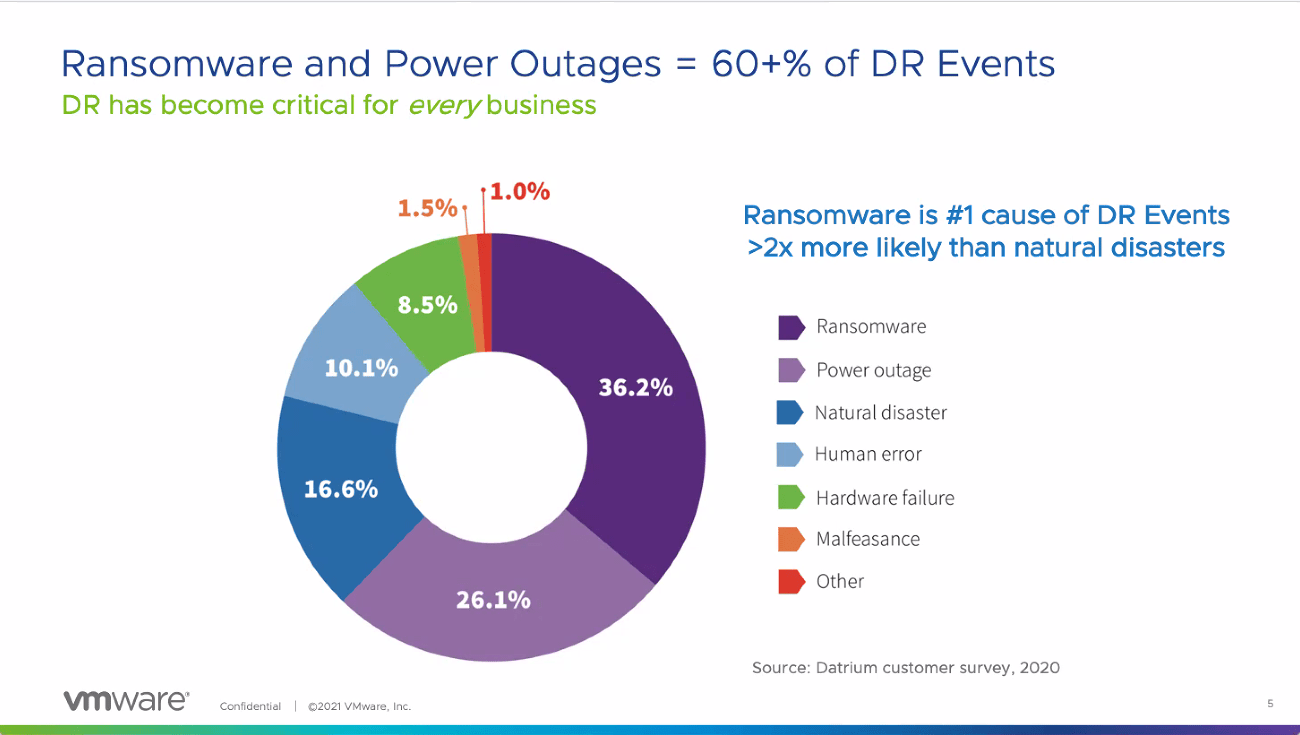
Physical disaster recovery begins by determining where you plan to relocate. You move your home from a place in California where the wildfires will surely burn it down to a different plot in a much safer location. Similarly, disaster recovery in information technology describes where organizations will move their critical applications and assets if they hope to stay open for business. Many companies create these plans to ensure that what needs to be recovered is recovered and with specific steps to that end in place. During the pandemic we’ve seen more and more businesses desire to maintain uptime for business from co-located data centers into the cloud. I can attest to the need for these kinds of solutions — I saw in real-time how data centers in Texas were not immune to the weather.
Enter VMware Cloud Disaster-Recovery (VCDR). VCDR allows users to run backups on their critical applications within their VMware environment. This ensures that each critical virtual machine has the needed data should the need arise to revert the machine or move it to a different location. VCDR currently only targets VMC on AWS, which is an on-demand solution for a full-stack VMware environment including computing, networking, and storage. VMC on AWS also allows users to access native AWS services from your VMware environment, attaching additional services by way of its integrated console. By specifying VMC on AWS as the target, VCDR is allowing the greatest cost savings for BCDR (Business Continuity Disaster Recovery) that can be allowed.
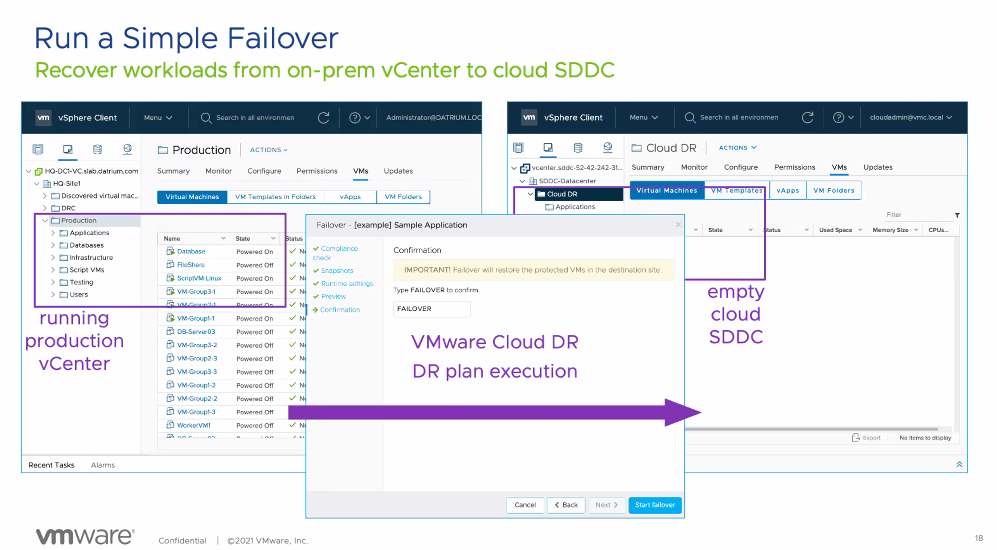
Since VMC on AWS is ‘on-demand,’ you don’t even need a target data center to send your backups to. You simply create the template that shows how that VMC on AWS solution will look once it’s set up, and then it will attach your backup storage to that SDDC (Software Defined Data Center) and restore your critical applications. VCDR does this by storing your change-block data and full backups within a central repository in the VMware Cloud. If you are running a cold DR, in which the target datacenter is not built, this solution will probably be a very cheap way to have a three to four hour restore target for your restoration.
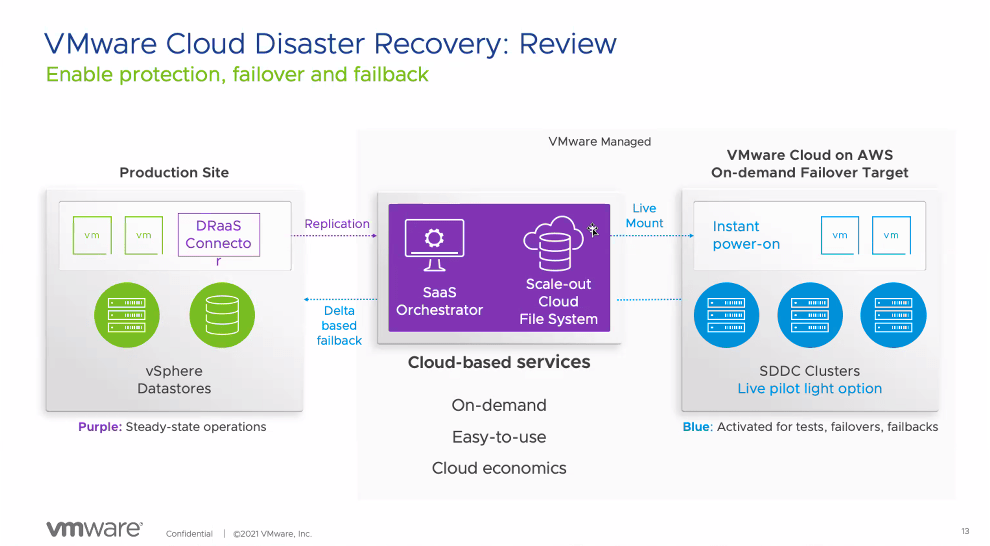
VMware Cloud’s ‘middle-man’ solution — between cloud SDDC and private data center
Some organizations will not be ready when disaster strikes, nor will they have service-level agreements in place that will work with a four-hour restoration and will need something faster. This is where VCDR allows a “Pilot light DR” or “Hot DR.” These DR solutions require a set of pre-built infrastructures that can be utilized for the recovery target. Depending on which you want to use, these recovery targets can be used for Tier -1 applications (apps that must never go down). Tier -1 apps are set up in extremely high-availability locations such as VMC on AWS. (Tier 0 would be applications in your private datacenter, which would need to be restored in a couple of minutes or less in the event of an incident).
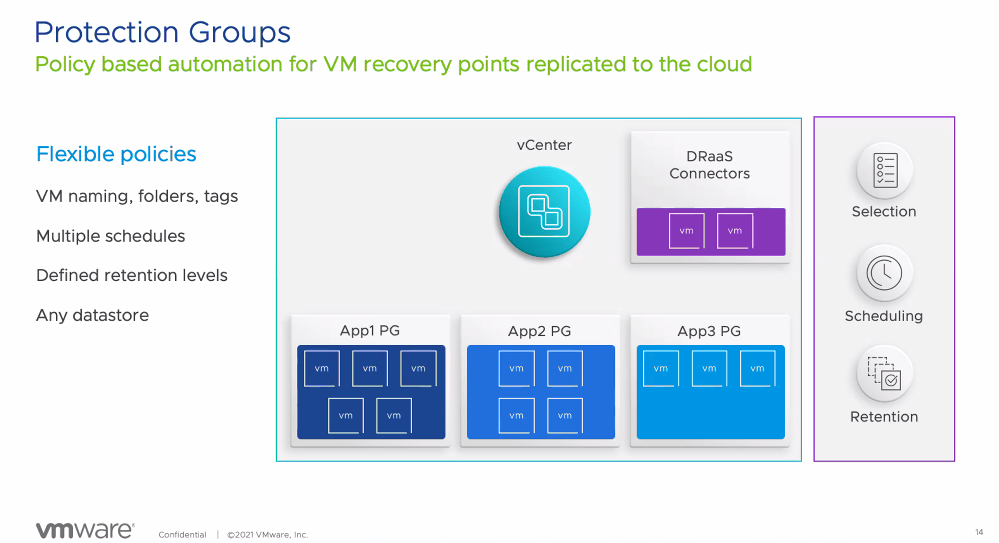
With these solutions, your recovery process can take place within minutes, allowing critical apps to be re-built in a small fraction of time. One thing to keep in mind is that VCDR allows the SDDC to be built in a 2-node configuration. This will appeal to people who need to have the restoration-target built at the least cost. Once the recovery process starts, the SDDC can be scaled out to support more nodes and applications. These application restorations can even be brought up in a powered-down or disconnected mode so ransomware can be removed. If ransomware is at fault and cannot be removed, you have the ability to hold backups from a long time past and even revert to those until your private datacenter is purged.
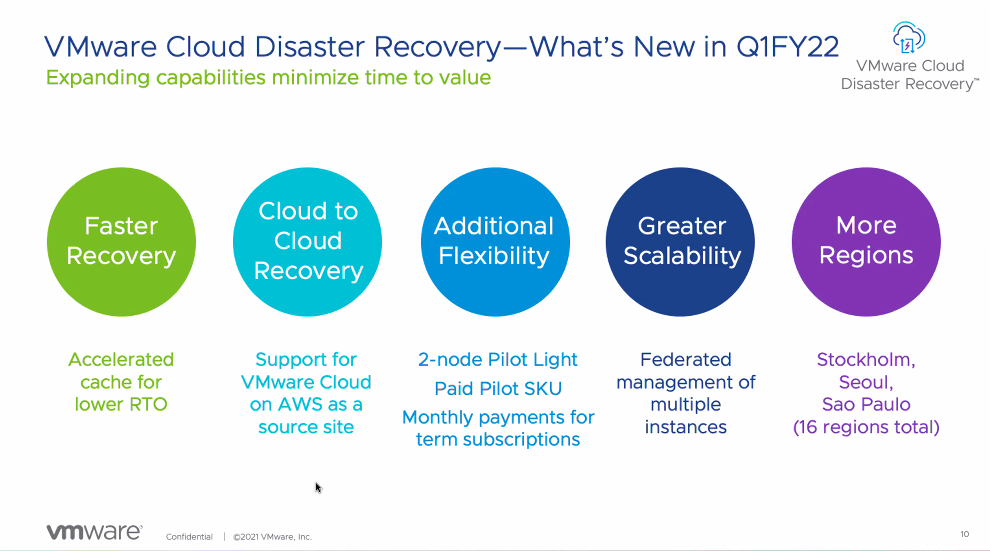
Getting all of this back up and running is all well and good, but then the question of cloud lock-in comes into play. Cloud lock-in is that pesky problem in which pulling your data out of the cloud is extremely expensive — vs putting it into the cloud, mostly free of charge. VCDR helps with this in a number of ways. Once your recovery into VMC on AWS is complete and you are back up and running, the VCFS (VMware Cloud File Storage) in VMware Cloud starts managing the change-blocks from the SDDC. Once you have cleaned your data center and are ready to pull the information back into your private cloud, VCDR only pulls the changes from the restoration into the VCFS and back into the private DC. What this means is that you are only being charged the egress fees for the changes since the recovery. This will lead to significant savings for organizations and should lessen the sting of Cloud lock-in.
Conclusion
I am a fan of the solutions that VCDR provides. Companies and organizations alike think they are prepared for the worst, but like most of the small businesses in Texas who were already fighting with the pandemic and were then hit with “the Storm of the Century,” they are not. Whether they will take disaster recovery into their own hands is a question only organizations themselves can answer, and because of this, only time and harsh ‘weather’ will tell if they are prepared. Sterling stands ready to help with these questions. Perhaps moving into a cloud DR is right for you, or perhaps setting up a co-location and expanding your options is your best solution. Knowing how you are protected and how to react to weather, attack, and ransomware is critical. These factors are not a question of “if” but “when.” Contact Sterling today and see what we can do to help you avert disaster.
